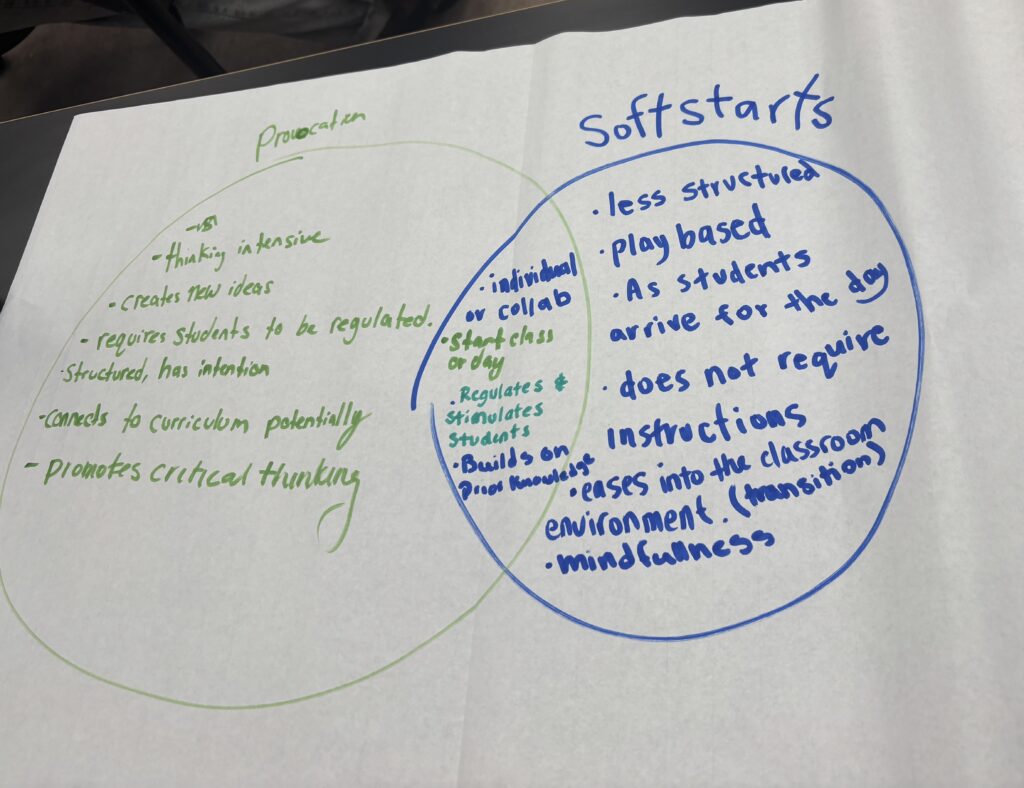
Soft Starts:
ROCK STORY PROVOCATION:
Today we tried a new provocation, we were allowed to work individually or in partners and we were shown a list of different prompts. We drew a card to then randomly be assigned a story prompt. My group got the prompt: “Lost”. We then grabbed a bag full of rocks with photos on them (All nature themed) and found a space to work. We had 10 minutes to brainstorm a beginning, middle and end (ELA cross curricular), and come up with a story line using the prompt and rocks we were given.
SNOWFLAKE PROVOCATION:

To start the class we were given materials such as small gems, straws, cotton swabs and scissors. We were also given this snowflake type handout to give us examples of what snowflake we could make! I really liked this activity because there was lots of room for creativity and different outcomes. At the end we did a gallery to all look at our different creations. There are tons of cross curricular activities I could think of that would pair nicely with this activity as well!
Connecting to the UVIC Teacher Competencies:
4) Demonstrate an understanding of the complexity of teaching and learning
I believe that the incorporation and understanding of how soft starts and provocations are important and beneficial, aligns with #4 (Demonstrate an understanding of the complexity of teaching and learning) under Personal and Professional Preparation, because there are so many layers to teaching and how you organize not only your classroom but your routine. I strongly believe that adapting to what best fits your students (especially when it comes to structure) is how you can best teach and form connections with your students that truly impact them. I believe that provocations provide opportunities for students to grow their critical and creative thinking skills in a way that simultaneously helps them form meaningful connections with their peers and teacher. I think this connects to this bullet point in the UVIC teacher competencies because I think it takes a level of understanding to realize the importance behind different teaching strategies and this is one example of how that level of complexity is understood and used to support different needs in the classroom.


Reggio Emilia Approach: “The Reggio Emilia approach is a student-centered, constructivist educational philosophy and pedagogy, particularly focused on preschool and primary education, emphasizing self-directed, experiential learning in relationship-driven environments.” – Google AI definition
One Response
judi61
Kylie,
I am curious as to how you will weave a provocation or more into your upcomng practicum! Good luck with soft starts as well!
Judi